Shaving Cream vs Soap, Gel, or Foam – Which Is Best To Use?
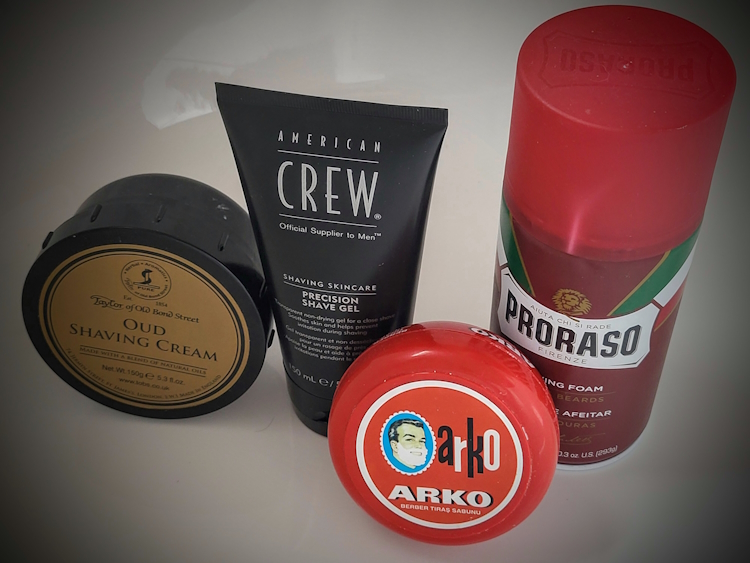
A lot depends on your shaving tool of choice when it comes to which lubricant is best.
It all becomes a bit complex, too, when we consider the various types of shaving creams, soaps, gels, and foams available.
Traditionally, we had a hard shaving puck-type soap and shaving cream that had to be lathered. These two options are still the go-to for guys who wet shave with a safety or straight razor. It’s the stuff I love, too!
Then came shaving foam in a can, shaving gel in a can that foams, non-lathering shaving cream, and finally, transparent shaving gels.
I’m going to share about the different types, the pros and cons of each, and which shaving tool is best suited for the lubricant.
Let’s start with the more traditional stuff!
Shaving Soap (traditional lathering)
Shaving soap is as traditional as it gets, and it is typically in a puck (a round, hard bar that fits in a tub).
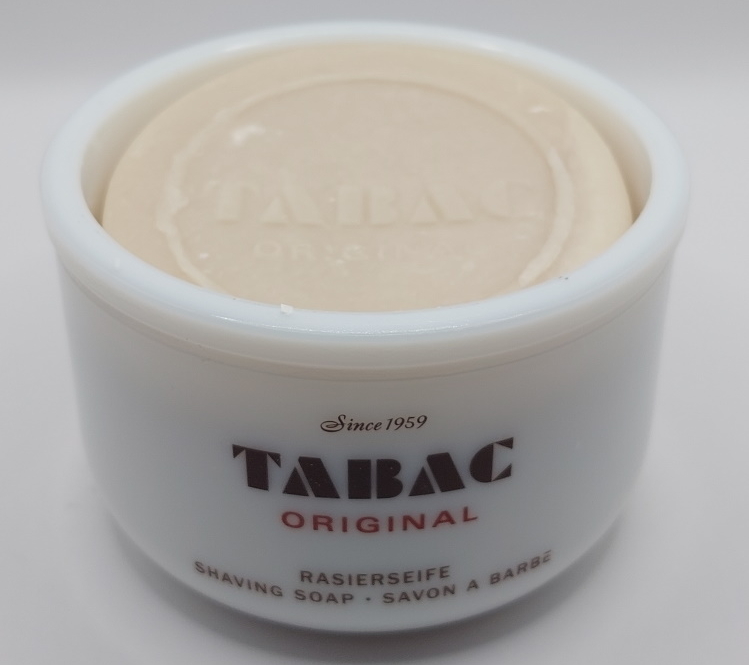
Soaps can also come in a stick type, like the stuff from Arko. This soap stick is first rubbed on the face, and then a shaving brush is used to create lather on the face. You can actually rub any puck on your face in this way, too, but it’s not designed for that purpose (try it, though).
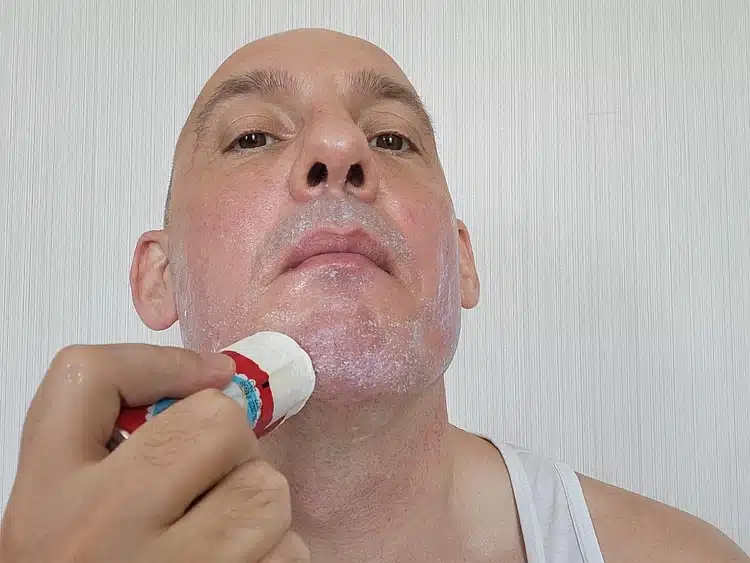
In my experience, soap is the best type to achieve a slick, lubricating effect with great moisturizing properties that have a positive impact on the skin. I feel that soap does the best job of lubricating for me in terms of slickness and after-effects, but that’s just my personal experience.
There is more involved in the lathering in terms of getting a shaving brush loaded with soap from the puck (bar) and choosing whether to lather on the face directly or whip up a lather in the bowl (and apply to the face).
A benefit of shaving soap is that it lasts longer, especially when using a triple-milled type.
Shaving soap can be messier, though, than using cream, as we have to get the puck wet and load the brush. Whereas a traditional type of shaving cream or other lubricants can be applied to the face, from a bowl, or a brush, with the desired amount.
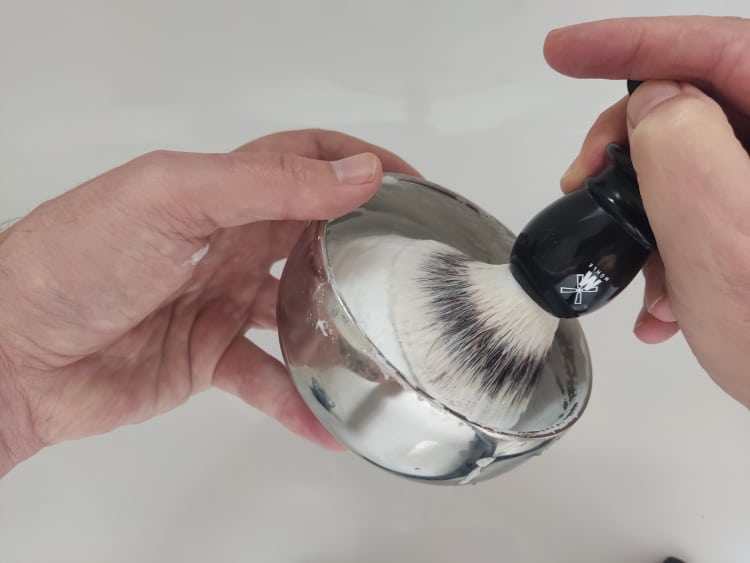
A puck of soap also needs a place to keep it, and not all soaps are the same size, so you need to use the right bowls or tubs to store them in, if they do not come in a suitable container. Some come with a bowl like D.R. Harris (example), but they can be pricey, and then we refill with a cheaper soap puck once the first puck is used.
I love a good shaving soap and the whole process of lathering with it; it’s all part of the shaving routine that can be satisfying, almost meditative. It feels like the purest way to start the process, if that makes sense!
You can use soap with a cartridge razor, as I have, but the soap needs to create a foamy lather to prevent the multi-blades from clogging. Ideally, a safety or straight razor is best suited!
When you use soap pucks, I consider you knee-deep in traditional wet shaving and praise your grooming with a patient style.
Shaving Cream (traditional lathering)
Traditional shaving cream is the type we typically find in tubs, although some brands, such as the Italian brand Proraso, also come in tubes.
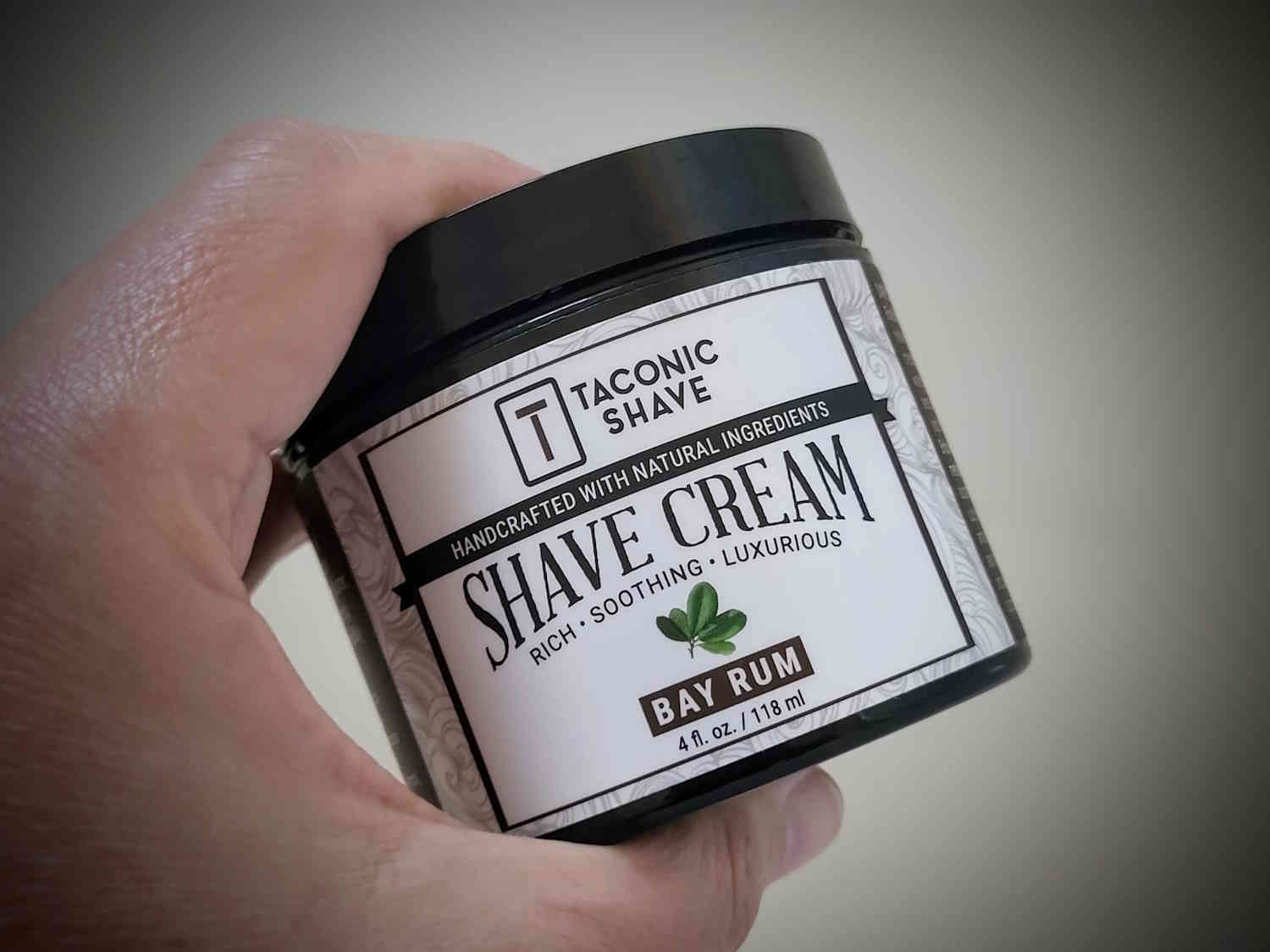
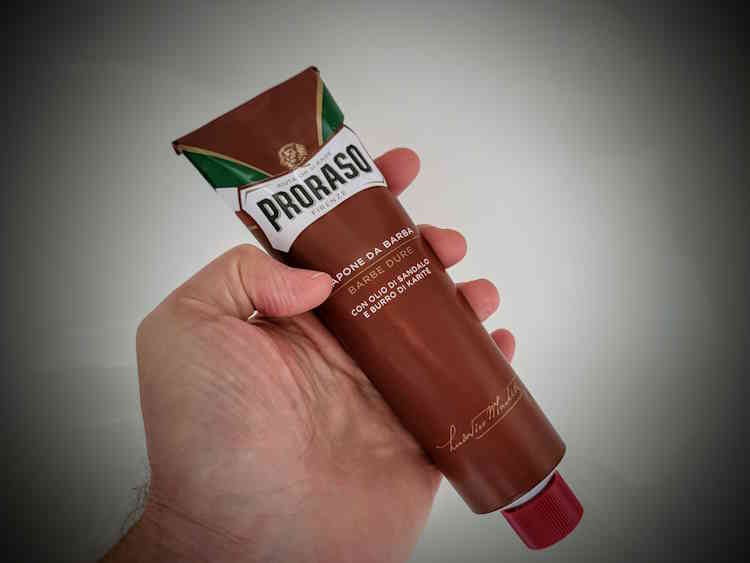
Traditional cream is just as popular as soap and preferred by some traditional wet-shaving gents. Its ease of use, while retaining all the traditional elements, including ingredients and brush lathering like soap, makes it a great option.
Cream in a tub won’t last as long as a puck of soap, but a typical 150 g/5.3 fl-oz tub still goes a long way.
Myself and others use this type of lubricant with a safety or straight razor just like soap. However, you can use this type of cream with a multi-blade razor, but keep the cream a bit more foamy to prevent the blades from becoming too clogged. (It won’t harm them, but it makes them more prone to clogging.)
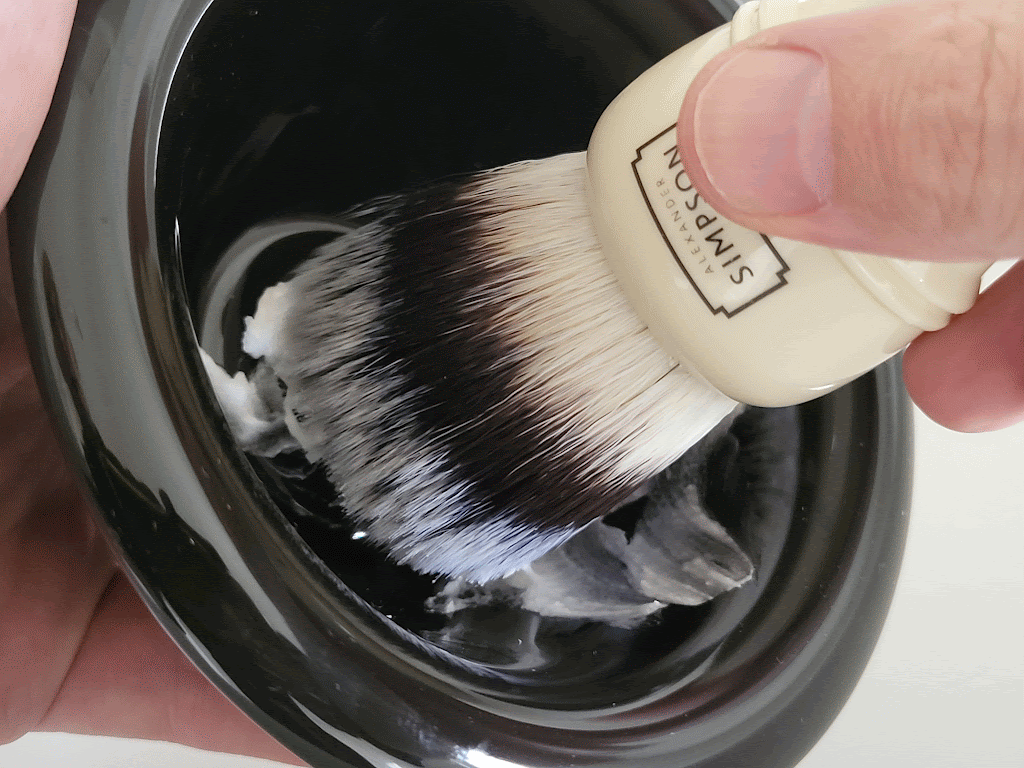
Shaving Cream (non-lathering)
I haven’t had a lot of experience with the more modern shaving creams that don’t lather. However, I have tried it with a cartridge razor and a dedicated electric head shaver, and it worked fine and very well with the latter.
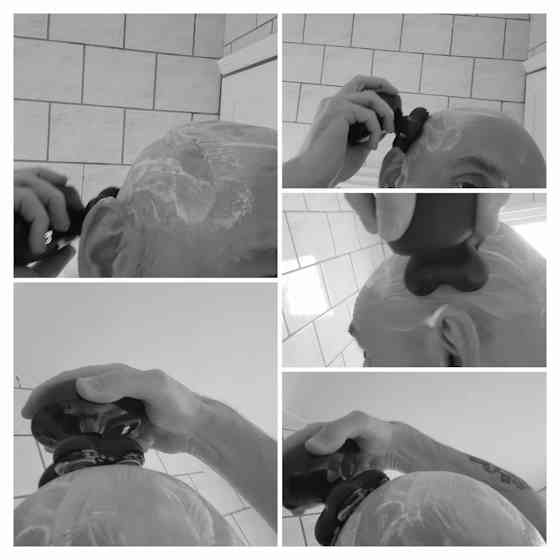
This type of cream is exactly that: it appears as a cream in a tube and retains its cream-like consistency once applied.
As a multi-blade razor comes with a lubrication strip, this type of shave cream works well. They seem to work together well. This cream does not provide the slickness that a traditional soap or cream typically offers, and is not required as much due to the added lubrication from the gel strip provided.
I’m seeing more men using this type of cream these days, with some finding it great and others not. For me, it lacks everything a lather and lubricant are about.
Head shaving with a dedicated head shaver worked very well because I only require a thin layer of lubricant with this type of shaver.
I have more to test out in this department, to be honest, and I don’t want to rubbish it too much without enough experience.
Shaving Foam (in a can)
I used shaving foam in a can for many years before starting my wet shaving journey with safety razors, and I knew no better.
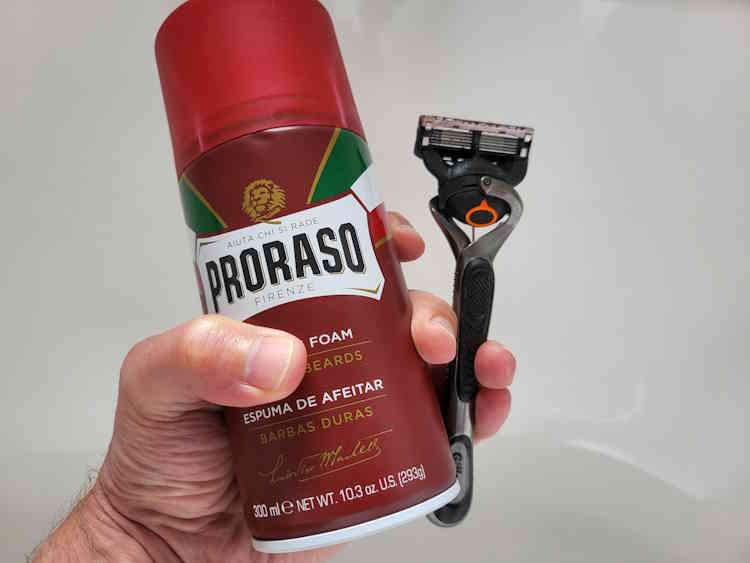
Nothing is easier than simply squirting a bit of foam from a can directly onto the face without any lathering up. But this is about the best aspect!
Other ingredients have to be added to the foam to enable it to be ready to squirt out and apply, whereas these ingredients are not required with other lubricants. These ingredients could mildly irritate the skin, as I had recently experienced with a tin of Proraso Red Shaving Foam.
Unlike the yogurt-like lather from soaps and traditional shaving soaps, which are less foamy, the foam has more — well, foam! This thinner foam lather is suitable for use with a multi-blade razor, as the multi-blade features a gel lubrication strip at the top that enhances the compatibility between the razor and foam.
Shaving Gel (foaming)
The first time I used some of this in a can made by Gillette was great with a Mach3, in my Mach3 days.
Starting off with a gel requires the user to massage the gel into the stubble to create the lather, which is preferable to simply applying canned foam directly to the skin. (Of course, you can also massage foam from a can, but I suppose many people don’t.)
If I had to choose between gel in a can and foam, I would definitely choose the gel. Some of these are powered by air rather than aerosol, which makes them more skin-friendly and environmentally friendly.
The slickness and protectiveness are still not what we get from using traditional shaving soap or cream. However, foaming shaving gel works well for a multi-blade razor.
Shaving Gel (non-foaming transparent)
King of Shaves was the first non-foaming gel I used a fair few years ago, and compared to shaving foam or gel in a can, it worked better for me.
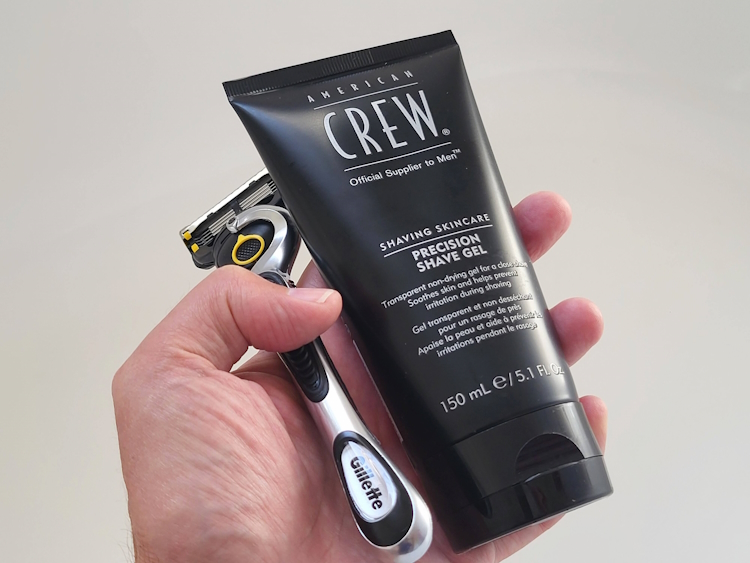
As the cartridge razor has that top lubrication gel strip, adding additional gel just makes sense to me.
I have been testing several of these shave gels recently and found that a good one only requires a small amount, but some require more.
A typical 150ml tube is not going to last as long as some other lubricants and, of course, nowhere near as long as a traditional soap or cream.
While most of these are transparent, I still find some of them create a white film.
I suppose an attractive feature of this type of gel is being able to see where you are shaving on the skin.
Final Thoughts – Which is Best?
Some of these have obvious advantages, such as increased slickness, moisturizing properties, and cushioning effects compared to traditional soaps and creams. Shave gel works well with the already-gelled feature of the multi-blade razor lubrication strip and does not necessarily require all of the qualities a traditional soap and cream provides.
However, much of this is also a matter of personal preference, especially when deciding between traditional shaving soap and cream, or shaving foam and gel.
If you take the traditional route, be warned: you’ll be introduced to some great scents that make lathering up a joy.
